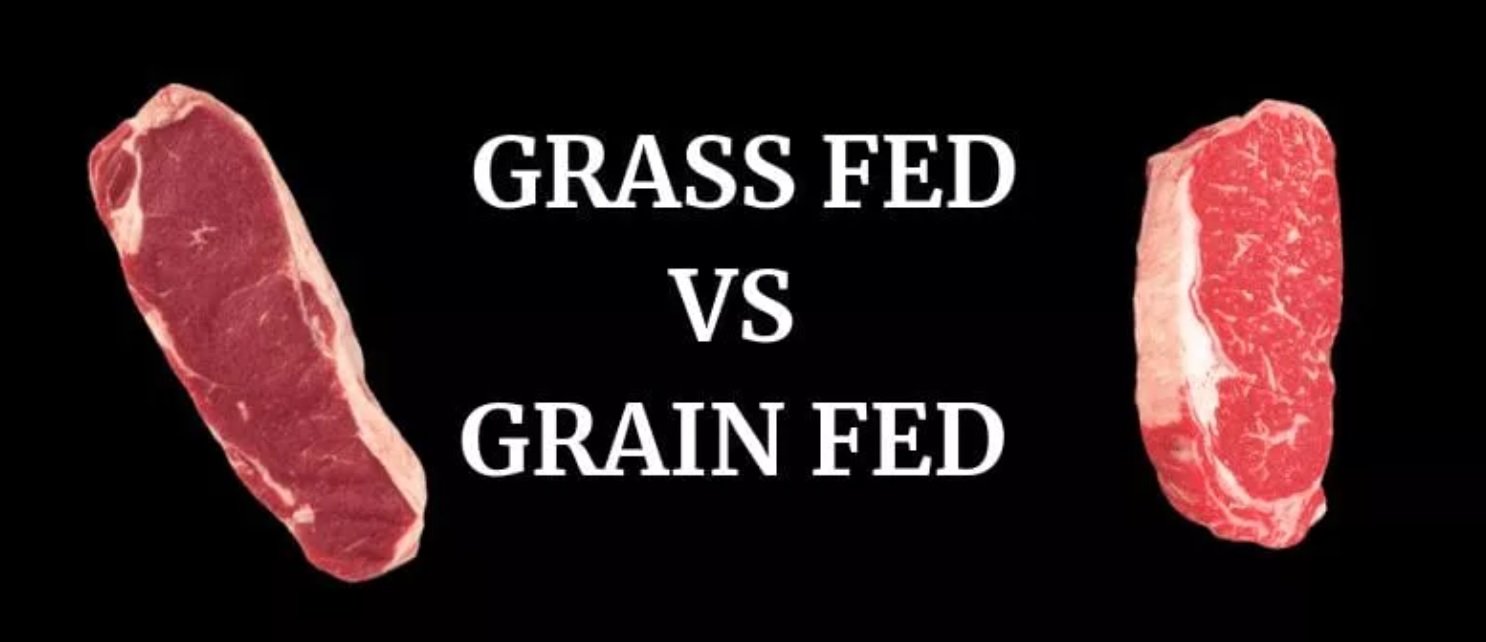Grass-Fed Beef vs Grass-Fed and Grass-Finished Beef
By now, you have probably heard of the term grass-fed beef. Whether you visit our online Papa Earth store, your local grocer, a butcher or, go directly to the farms yourself to shop, you’re learning not to be tricked by simple buzzwords that sell products to the well-meaning consumer.
 In your research, you’ve probably then heard of ‘grass-finished’ beef and might have wondered how it differs from its grass-fed counterparts. As the wording implies, grass-fed beef comes from cattle that ate grass. This classification can be given to any beef from cows that consumed grass at any point in their lives. Grass-fed does not mean that the cattle have exclusively eaten grass, however. These cows may have had their diets supplemented with grain feeds and corn to express their growth and weight to maturity and often, these cows could have come from large feedlots. A cow that has eaten nothing but grass and forage their entire life is grass-fed and grass-finished. Grass-fed, therefore, is not interchangeable with grass-finished. An animal can easily be considered grass-fed but it is much less common for beef to be from cows that are both grass-fed and finished.
In your research, you’ve probably then heard of ‘grass-finished’ beef and might have wondered how it differs from its grass-fed counterparts. As the wording implies, grass-fed beef comes from cattle that ate grass. This classification can be given to any beef from cows that consumed grass at any point in their lives. Grass-fed does not mean that the cattle have exclusively eaten grass, however. These cows may have had their diets supplemented with grain feeds and corn to express their growth and weight to maturity and often, these cows could have come from large feedlots. A cow that has eaten nothing but grass and forage their entire life is grass-fed and grass-finished. Grass-fed, therefore, is not interchangeable with grass-finished. An animal can easily be considered grass-fed but it is much less common for beef to be from cows that are both grass-fed and finished.
The above in mind, the keen shopper might notice more clever marketing tactics in play when shopping for beef. “Grass-fed, grain-finished” labeling has become more common and eye-catching. Though the statement is true, it creates the illusion that the product itself is somehow different from what it used to be, when it is simply a re-branding of their conventionally raised meat.
The journeys of the cows that meet Canadian tables mostly start the same way: calves begin on their mothers’ milk for approximately six months before grazing in grass and forage fields for about a year. As the Canadian climate doesn’t make it easy to grow fresh grass year-round, their winter forage diets are made up mainly of hay and silage. Beef from cows that continue to eat this way get the label of grass-finished and lead a more natural lifestyle in pastures.
Majority of Canadian beef market is corn and grain fed
More than 98 % of the beef consumed in Canada is grain-fed, with the typical supplements being corn or barley. These cows were transferred to be fattened up on feed lots at some point in their last sixty to two-hundred days. As the goal of these lots is to quickly ripen the animal to a certain maturity and the number of animals is high, the likelihood of contact with added hormones and use of antibiotics increases.
Why choose grass-fed, grass-finished?
As this method of raising the animals is closest to a natural lifestyle for a cow and includes the foods that they should be eating, the cattle are healthy and this is passed on the meat consumer. There are many health benefits in choosing grass-fed and finished beef. In comparison to the grain-finished varieties, it is 20% lower in calories and has more omega-3 fatty acids, vitamins A and E and acids that fight cancer and inhibit body fats, called Conjugated Linoleic Acid.
As these animals are more likely to be pasture-raised and lifetime grazing without the interference of added hormones, they lead healthier and, we suppose, happier lives. Farmers that take the time to raise their cows this way tend to also be selective in their methods of slaughter and very often have personally-vetted relationships with abattoirs and sellers.
Why grain-finish then?
As with most big business decisions, output and low costs are high priorities. It is cheaper and higher-yielding to feed cows grain than to tend to the land and the animals over large fields and pastures. The animals become meat much quicker and develop the fat marbling and colouring that North Americans are accustomed to – making it more appealing on the shelf.
Is there a difference in the taste?
Where a person buys their meat, where it comes from, what the cows were fed, the soils the feeds come from, the climate and the breed of animal all definitely influence the taste of the product. Meat from dairy cows, for example, even when grass-fed and finished leaves much to be desired when it comes to flavour and tenderness.

A lot of design work and thoughtfulness goes in to developing meat textures and flavours that customers will enjoy. Grass-fed and grass-finished beef tends to be leaner, softer and has a deeper and darker colour of red than simple grass-fed beef. Marbling (the winding flavourful, fat patterns in the beef) earn beef their ratings, like sought after AAA-grade.
Grown and processed properly, grass-fed and grass-finished is NEVER tough, gamey or unpleasant to eat. Apart from that, all of our beef at Papa Earth has been aged for a minimum of 3-4 weeks which makes the meat more tender and flavourful.
Papa Earth’s grass-fed and grass-finished beef farmers
At Papa Earth, our grass-fed beef is 100% grass-fed, grass-finished, organic and free-range. We source most of our grass fed, grass-finished beef from Harley Farms (Keene, ON) and Trick’s Creek Farm (Clinton, ON). Their breeds of cattle are Angus, Herefords, Belted Galloways and Wagyu. In terms of grass fed we offer: strip loin steaks, rib eye steaks, prime rib steaks, tenderloins steaks, sirloin steaks, braising ribs, ground beef, hamburger patties, stew beef, beef stir fry, liver, heart, tongue and marrow bones. Apart from meat we also offer salted and unsalted grass-fed butter.
 We support farmers who maintain sustainable farming practices that prioritize animal welfare. Harley Farms is for example certified by SPCA (Society for the Prevention of Cruelty to Animals) and Trick’s Creek Farm is certified organic by Eco-Cert. Our farmers do not use added hormones, synthetic fertilizers, herbicides, insecticides, GMOs and irresponsible use of antibiotics. For the best grass-fed beef from sustainable local farmers, try us out through our online store and customize your own package.
We support farmers who maintain sustainable farming practices that prioritize animal welfare. Harley Farms is for example certified by SPCA (Society for the Prevention of Cruelty to Animals) and Trick’s Creek Farm is certified organic by Eco-Cert. Our farmers do not use added hormones, synthetic fertilizers, herbicides, insecticides, GMOs and irresponsible use of antibiotics. For the best grass-fed beef from sustainable local farmers, try us out through our online store and customize your own package.



Join the discussion 4 Comments